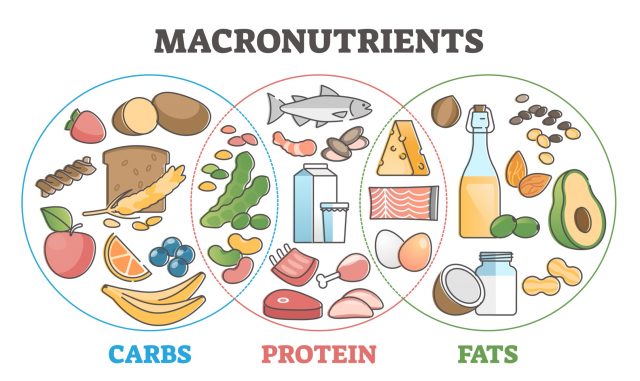This year, the most popular New Years’ resolution was once again fitness-related. As many Americans return to counting calories and planning workouts in the new year, John Beall of Rise Bodyworks hopes to highlight an often overlooked and crucial aspect of nutrition – macronutrients. Whether you are looking to improve your diet or meet a fitness goal, understanding macronutrients and their role in a well-balanced diet will be essential in reaching your health goals.
John Beall states that tracking macronutrients will directly affect current nutritional understanding and fitness performance while helping individuals develop healthier habits in the long term. Although counting calories is a significant aspect of meeting health goals, John Beall encourages individuals to deepen their understanding of nutrition and help by focusing on macronutrients as well.
Step 1: Calculate Total Calorie Needs
Before creating a macronutrient ratio that works for you, you will first need to determine your overall caloric need or the total amount of calories you need throughout your day. This can be done by first calculating your resting energy expenditure and non-resting energy expenditure, often referred to as REE and NREE, respectively. REE is the total calories a person naturally burns while resting, typically associated with metabolism, while NREE is the calories naturally burned during daily activities.
The method of determining the REE and NREE that is most often used by nutritionists and sports scientists is called the Mifflin – St. Joer question.
- Men: calories/day = 10 x weight (kg) + 6.25 x height (cm) – 5 x age (y) + 5
- Women: calories/day = 10 x weight (kg) + 6.25 x height (cm) – 5 x age (y) – 161
Then, multiply your result by an activity factor — a number that represents different levels of activity (7):
- Sedentary: x 1.2 (little to no exercise weekly)
- Lightly active: x 1.375 (light exercise less than three days per week)
- Moderately active: x 1.55 (moderate workouts most days of the week)
- Very active: x 1.725 (hard workout every day)
- Extra active: x 1.9 (strenuous exercise two or more times per day)
- The end result gives you your TDEE.
Those looking to lose weight are encouraged to eat 500 calories less than they naturally expend each day to see steady weight loss results (1 pound per week.) However, individuals looking to gain muscle mass must increase their caloric intake.
Step 2: Research Macros Nutrients
Before developing your own macronutrient ratios, you will first need to familiarize yourself with an overview of macronutrients. Macronutrients can be defined as the molecules we need to simply survive. Micronutrients are substances required in much smaller amounts to function, such as minerals, vitamins, and electrolytes, which will be discussed in a future article. The three macronutrients can be broken down into proteins, fats, and carbohydrates.
Carbohydrates
Another myth in fitness that is often seen is that carbohydrates are bad for diets. Carbohydrates are a necessity for energy, as carbohydrates convert within the body to glucose which can either be immediately used or stored as glycogen, which can be used later for exercise. Complex carbohydrates, which typically come from whole grains and vegetables, can also promote digestive health because they offer high amounts of fiber to the body.
Protein
Protein is not only essential for growing muscle mass, but for rebuilding muscle, body growth, and protecting the immune system against infections. Proteins are made up of amino acids, a crucial element within the human body. Scientists now know that our bodies need 20 different amino acids; however, only eleven are naturally formed within the body. This means that we must obtain nine essential amino acids from food.
Some of the most highly recommended foods containing large amounts of protein include red meat, white meat, fish, yogurt, soy, cheese, and various other dairy products. However, individuals who eat a vegan diet can find essential proteins in a variety of plants, vegetables, starches, and legumes.
Fats
While the majority of people starting their fitness journey believe fats are the enemy, fats are a necessity to perform a wide variety of bodily functions. Individuals need fat to absorb various fat-soluble vitamins, including vitamin A, D, K, and E, and support hormone production and cellular growth. While certain fats can be a disadvantage to a diet that is looking to cut excessive weight, fats should never be fully cut from a balanced diet.
Step 3: Decide Your Ideal Macronutrient Breakdown
Once you have researched your ideal caloric intake and the various macronutrients, you can now decide what macronutrient ratio works best for you and your fitness goals. How a person creates their macronutrient ratio will directly impact how quickly they will reach their fitness and health goals. For example, if a person’s immediate goal is to lose excess body fat, they would benefit from a macronutrient breakdown of 30% fat, 35% protein, and 35% carbs. However, a person looking to bulk or grow their muscle mass would benefit from a breakdown of 50% carbs, 20% fat, and 30% protein. Additionally, someone looking to develop a successful ketogenic diet may need much more fat and fewer carbs than a competitive athlete who would heavily rely on carbs to fuel their workouts.
Most nutritionists recommend a macronutrient breakdown of:
- Fats: 20–35% of total calories
- Carbs: 45–65% of total calories
- Proteins: 10–35% of total calories
However, these ratios may not work for every individual and can be changed to meet specific goals.






